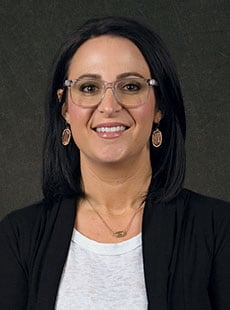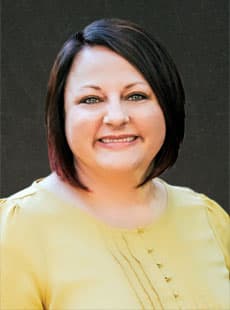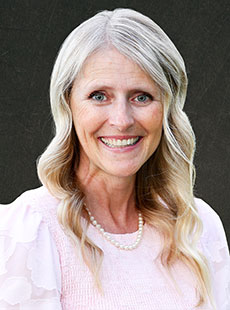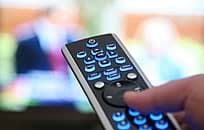 Course Introduction
Course Introduction
Core Standards of the Course
Strand 1
Students will understand the components of customer service
Standard 1
Students will identify customer services policies and procedures.
-
Understand the marketing concept and how it relates to the customer.
-
Define policy and procedure
-
Research and analyze customer service policies in terms of their effectiveness.
-
Analyze and improve customer service policies and procedures based upon research.
-
Describe appropriate procedures and customer care based -on industry environment.
-
Call and Chat Centers (telecommunication)
-
Retail (i.e. brick and mortar stores, e-tailing)
-
Wholesale
-
Service Industries (i.e. medical, hospitality and tourism, lodging and recreation, sports/entertainment, etc.)
Standard 2
Students will understand and demonstrate the customer service mindset of achieving the "win-win".
-
Recognize the difference between: "lose-lose", "lose-win", "win-lose", and "win-win".
-
Identify behaviors (ref. strand 3 standard 1) associated with the "win-win" customer service mindset based on industry environment.
Performance Skills
Research how to provide proper customer service through:
Strand 2
Students will identify and understand the target customer.
Standard 1
Identify and explain the importance of a customer profile - Determines the target market, where to spend advertising dollars, common key factors of a company's customers, etc.
-
Create a customer profile using market segmentation.
-
Compare customer expectations based on the market segmentation.
-
Identify and explain how a customer profile can help obtain new customers or retain existing customer.
Strand 3
Students will discover & develop critical aptitudes and "soft skills" in customer service.
Standard 1
Identify traits and develop communication skills necessary to provide exceptional customer service.
-
Follow directions from management and provided training experience.
-
Compare listening types.
- Active Listening
- Passive Listening
- Identify different forms of communication
- Verbal
- Voice inflection
- Appropriate word choice (i.e. avoiding slang, jargon, non- positive words such as can't, won't, wouldn't, no)
- Non-Verbal
- Eye Contact
- Body Language
- Facial Expressions
- Posture
- Gestures
- Touching/Physical Contact
- Eating/Chewing gum
- Sighing
- Slow Movement (Dilly-Dallying)
- Verbal
- Identify different forms of communication
-
Identify soft skills used in customer service.
- Demonstrate professionalism (dressing appropriately for the industry, speaking clearly with appropriate word choice, showing appropriate respect to your customer, etc.)
- Effective interactions (not allowing emotions to escalate, keeping tangents at bay, conversations moving toward resolution, speaking to your audience vs talking up or down to them, reading your customer, respecting your customer's pace [not too fast or too slow])
-
Identify some components of customer service to establish customer rapport (opening, discovery, resolution, ownership, etc.).
- Opening
- Greet customer (Smile: in person or on phone)
- Discovery
- Active listening
- Questioning
- Resolution
- Clarify
- Paraphrase
- Summarize
- Ownership
- Employee Empowerment (clearly defining what the employee is allowed and limited to do in resolving
issues) - Taking ownership of resolving issues and assuring that employees work towards resolution in terms of every reasonable request.
- Employee Empowerment (clearly defining what the employee is allowed and limited to do in resolving
- Customer service representatives should always:
- Be courteous
- Be responsive in a timely manner
- Reflect company values and goals (acting professional on and off the clock)
- Be an advocate for company products and services
- Be honest with customers
- Show Empathy
- Ways of Showing Empathy
- Show humanity and respect to every customer
- Give your customer your full attention
- Listen carefully and genuinely
- Ask meaningful questions
- Show sincere appreciation
- Acknowledge and follow-up with customers who are waiting
- Briefly reference similar experiences when appropriate to build relationship and trust with customer
- Opening
Standard 2
Explore and understand the aptitudes needed to complete the customer service process.
-
Customer Service employment evaluations.
- Aptitude Test
- Complete an aptitude test
- Evaluate the results of the aptitude test
- Compare aptitudes with traits necessary in a customer service role/environment for the industry.
- Personality Profile
- Complete a personality profile
- Compare profile with traits necessary in a customer service role/environment for the industry.
- Aptitude Test
-
Develop and demonstrate product knowledge
-
Complete and evaluate a personal aptitude assessment.
-
Complete and evaluate a personality style assessment.
Strand 4
Students will understand resources used to enhance customer experiences.
Standard 1
Identify reasons a company would utilize resources to enhance customer service.
-
Understand how, and why companies track online communication.
-
Identify ways a company could increase profits/sales by customers experiencing positive interaction.
-
List ways a company could decrease profits/market-share by customers having poor experiences.
-
Describe the benefits and ethical implementation of using a "secret shopper" program to ensure the quality of customer service provided.
Standard 2
Students will identify resources to communicate with customers.
-
Identify tools to communicate with customers and the effectiveness of these tools in different industries.
Standard 3
Students will explain and understand the need for confidentiality.
-
Identify reasons for customers to expect privacy in a variety of company settings (i.e. health, service, travel/tourism, sports/entertainment, etc.)
-
Discuss liability issues faced by companies and how those liabilities could have an impact on the company (future customer service trainings, company profitability, company image, etc.)
-
Investigate the need for security measures to protect information gathered and maintained by companies.
Strand 5
Students will evaluate, develop, and measure customer loyalty and satisfaction.
-
Define Customer Satisfaction
-
Evaluate the expenses involved with attracting, maintaining and satisfying customers.
Standard 2
Understand the need for customer retention as an integral function of every company employee.
-
Compare the different ways employees on different authority levels within the company might impact customer retention.
- Middle or upper management:
- Development of procedural standards
- Planning for and evaluating existing customers and prospecting new customers.
- Employees directly interacting with customers or entry level employees:
- Observing and interacting with customers regarding continual points of concern.
- Providing feedback of consistent issues and resolutions through the proper chains of authority.
- Interactions with customers with the goal of achieving a "win-win" --aka being the "Face of the Company"
- The level of authority granted employees to solve problems for customers without management approval.
- Middle or upper management:
-
Positive and negative impact of word of mouth.
Standard 3
Improving customer satisfaction.
-
Identify and understand the implementation and use of common loyalty programs.
-
Identify and evaluate how to increase satisfaction through a "customer service experience."
-
Specify customer service tactics in sales that make the customer feel as though they are being "sold" or taken advantage of vs receiving a positive, mutually beneficial customer service experience.
-
Students should select a company from an industry he/she is interested in. Research and evaluate a current customer service program for selected company and suggest changes to increase clarity, efficiency of employees or achievement of customer service goals.
-
Create a customer service program and assess it for proper behavior.


 UTAH EDUCATION NETWORK
UTAH EDUCATION NETWORK

 Justin
Justin Braxton
Braxton Dani
Dani Kayla
Kayla Katie
Katie Lora
Lora Rob
Rob Val
Val
